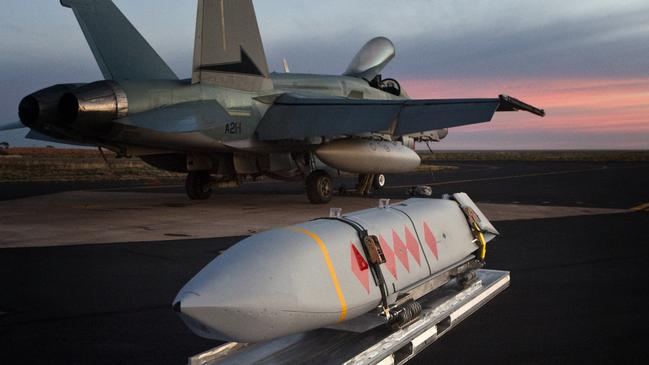To hit a target, you’ve got to be able to see it
The ADF is planning to field a dozen different long-range weapons, and they need to be able to find their targets.

The Australian Defence Force (ADF) is planning to field a dozen different long-range weapons, and they need to be able to find their targets.
This explains the unexpected inclusion of a Defence Targeting Enterprise in this year’s Integrated Investment Program.
Annoyingly, Defence has declined to say more at this stage, despite allocating $7.6bn to the Enterprise out to 2034.
The need to beef-up the ADF’s “left of launch” capability is clear: Defence needs to detect, identify and track targets for its weapons and locate those targets accurately. After the attack it needs to carry out post-strike reconnaissance to establish whether the target was actually hit and, if so, how badly it was damaged.
Today, the furthest the Army can shoot is about 30km using artillery – you can almost see the target through a pair of binoculars. The RAN’s SM-2 missiles have a range of about 170km, and they fire at radar reflections. The RAAF is using the semi-stealthy Joint Air-Surface Stand-off Missile, or JASSM, which has a range of about 370km and needs accurate target location data before it is fired.
The RAAF and RAN missiles depend on good intelligence and situational awareness to determine what not to shoot at. And JASSM also needs help to pinpoint targets, including latitude and longitude. Now the RAAF, RAN and Army are getting longer-range missiles, from the Army’s 70km-range GMLRS up to the RAN’s 1600km-range Tomahawk strike missile and including both the Extended Range version of JASSM and its anti-ship stablemate the Long Range Anti-Ship Missile, or LRASM. The need for accurate target data and corroborating intelligence for those weapons will be even greater.
The ADF has actually been developing a stand-off targeting capability since it selected JASSM in 2006 – details are, unsurprisingly, scarce. So, it’s not going into this new world cold: its targeting resources will eventually include the Triton UAS which will be able to monitor massive sea and land areas from more than 15,000m; surveillance satellites; the Jindalee Over the Horizon Radar (JORN); radars and infrared sensors on the P-8A Poseidon, E-7A Wedgetail, warships, Super Hornets and F-35A Lightning IIs; and a Joint Air Battle Management System, or JABMS, which Lockheed Martin Australia is developing under the recently awarded contract for Tranche 2 of Project AIR6500.
In an increasingly “joint” world this is where the enterprise may be able to deliver: taking target information from intelligence sources and sensors right across the ADF and giving it to the appropriate “effector” (Defence’s way of describing something that actually does things), regardless of who operates it.
Two things jump out at the observer: you need good communications to make it work; and you need artificial intelligence (AI) to make it work quickly – though the AI will mostly support human decision-making so that it’s still a human who makes what might be a life-ending decision.
You almost certainly need a targeting cell embedded in an operational headquarters to handle immediate-notice threats such as incoming missiles. For less immediate threats and static targets such as dockyards or an enemy headquarters, you probably need a dedicated headquarters further back from the front line to sift intelligence and feeds from sensors and take a considered decision on which weapon – if any – to allocate to which target.
The targeting cell and HQs needs good communications links – voice and data – with their information sources and with the effectors available to the commanders. Many of these links already exist and it doesn’t need to duplicate them, but it may need to add others who haven’t been necessary before. And it will probably need to add capacity to existing links.
Building a targeting cell in an existing HQ isn’t that hard – operational HQs are set up for exactly that, and to be interoperable with our allies and friends. The headquarters, similarly, isn’t hard: with a little extra work the ADF’s planned JABMS could fulfil the role. Essentially, JABMS will be a replacement for the existing Vigilare air defence command and control system which is operated by the RAAF’s 41 Wing in a bunker at RAAF Base Williamtown.
Coincidentally, or not, JABMS’s total budget is almost exactly what Defence has earmarked for the Defence Targeting Enterprise. And perhaps that’s what’s in Defence’s mind?
You’d never know, though – as usual, they won’t talk about it.


